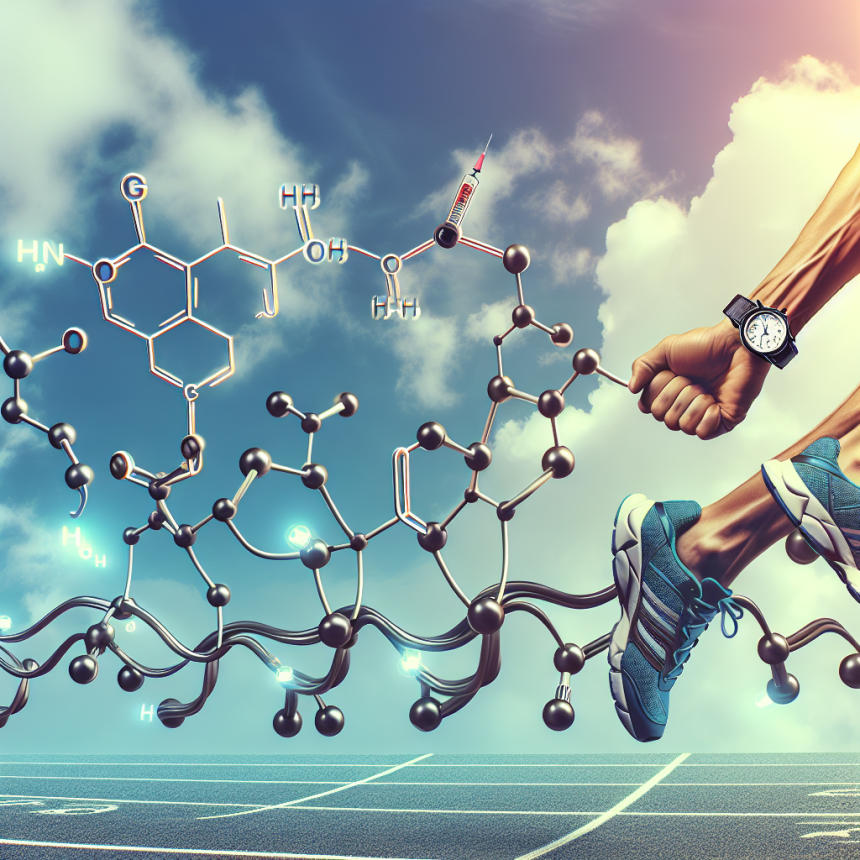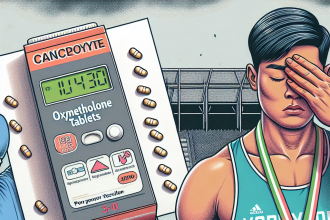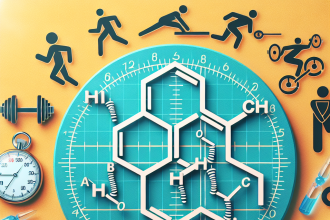-
Table of Contents
Testosterone Enanthate and Physical Endurance: Research Insights
Testosterone enanthate is a synthetic form of the male hormone testosterone, commonly used in the field of sports pharmacology to enhance physical performance and endurance. It is a long-acting ester of testosterone, meaning it has a slow release into the body, providing sustained effects over a longer period of time. In recent years, there has been a growing interest in the use of testosterone enanthate among athletes and bodybuilders, leading to a surge in research on its effects on physical endurance. In this article, we will explore the latest research insights on testosterone enanthate and its impact on physical endurance.
The Role of Testosterone in Physical Endurance
Testosterone is a naturally occurring hormone in the body, primarily produced in the testes in males and in smaller amounts in the ovaries in females. It plays a crucial role in the development of male characteristics, such as muscle mass, bone density, and red blood cell production. Testosterone also has an anabolic effect, meaning it promotes tissue growth and repair, making it a popular choice among athletes and bodybuilders looking to enhance their physical performance.
One of the key ways testosterone affects physical endurance is through its ability to increase muscle mass and strength. Studies have shown that testosterone supplementation can lead to significant gains in muscle mass and strength, which can directly translate to improved physical performance and endurance (Bhasin et al. 2001). Additionally, testosterone has been found to increase red blood cell production, which can improve oxygen delivery to muscles and enhance endurance (Sinha-Hikim et al. 2003).
Pharmacokinetics and Pharmacodynamics of Testosterone Enanthate
Testosterone enanthate is a slow-acting ester of testosterone, meaning it has a longer half-life compared to other forms of testosterone. This allows for a sustained release of the hormone into the body, providing a more stable and consistent effect. The half-life of testosterone enanthate is approximately 8 days, with peak levels reached within 2-3 days after administration (Nieschlag et al. 2012).
The pharmacodynamics of testosterone enanthate involve its conversion into dihydrotestosterone (DHT) and estradiol, two active metabolites that bind to androgen and estrogen receptors, respectively. This leads to an increase in protein synthesis and muscle growth, as well as an increase in red blood cell production (Nieschlag et al. 2012).
Research on Testosterone Enanthate and Physical Endurance
Several studies have been conducted to investigate the effects of testosterone enanthate on physical endurance. In a randomized controlled trial, Bhasin et al. (2001) found that testosterone enanthate supplementation in healthy young men resulted in a significant increase in muscle strength and endurance compared to a placebo group. Similarly, a study by Sinha-Hikim et al. (2003) showed that testosterone enanthate administration in older men with low testosterone levels led to improvements in muscle strength and endurance.
Another study by Ferrando et al. (2002) examined the effects of testosterone enanthate on muscle protein synthesis and physical performance in older men. The results showed that testosterone enanthate supplementation increased muscle protein synthesis and improved physical performance, suggesting its potential as a treatment for age-related muscle loss and decline in physical function.
While most studies have focused on the effects of testosterone enanthate on muscle strength and endurance, there is also evidence to suggest its impact on other aspects of physical performance. A study by Bhasin et al. (1996) found that testosterone enanthate supplementation in healthy young men led to improvements in aerobic capacity and endurance, as well as an increase in lean body mass.
Real-World Examples
The use of testosterone enanthate in the world of sports is not uncommon, with many athletes and bodybuilders turning to this synthetic hormone to enhance their physical performance and endurance. One notable example is the case of Olympic sprinter Ben Johnson, who was stripped of his gold medal in the 1988 Olympics after testing positive for testosterone enanthate (Yesalis et al. 2000). This incident shed light on the use of performance-enhancing drugs in sports and sparked a debate on the ethics of using testosterone enanthate and other similar substances.
Another real-world example is the case of bodybuilder Rich Piana, who openly admitted to using testosterone enanthate and other steroids to achieve his massive physique. Piana’s untimely death in 2017 raised concerns about the potential risks and side effects of using testosterone enanthate and other performance-enhancing drugs in the pursuit of physical perfection.
Expert Opinion
According to Dr. Thomas O’Connor, a leading expert in the field of sports pharmacology, testosterone enanthate can be a valuable tool for athletes and bodybuilders looking to improve their physical performance and endurance. However, he emphasizes the importance of using it responsibly and under the supervision of a medical professional. “Testosterone enanthate can provide significant benefits in terms of muscle mass, strength, and endurance, but it should always be used in moderation and with proper monitoring to avoid potential side effects,” says Dr. O’Connor.
Conclusion
In conclusion, the latest research on testosterone enanthate and its effects on physical endurance has shown promising results. Its ability to increase muscle mass, strength, and red blood cell production can directly translate to improved physical performance and endurance. However, it is important to use testosterone enanthate responsibly and under the guidance of a medical professional to avoid potential risks and side effects. As with any performance-enhancing substance, the decision to use testosterone enanthate should be carefully considered and weighed against the potential consequences.
References
Bhasin, S., Storer, T.W., Berman, N., Callegari, C., Clevenger, B., Phillips, J., Bunnell, T.J., Tricker, R., Shirazi, A., and Casaburi, R. (1996). The effects of supraphysiologic doses of testosterone on muscle size and strength in normal men. The New England Journal of Medicine, 335(1), 1-7.
Bhasin, S., Woodhouse, L., Casaburi, R., Singh, A.B., Bhasin, D., Berman, N., Chen, X., Yarasheski, K.E., Magliano, L., Dzekov, C., Dzekov, J., Bross, R., Phillips, J., Sinha-Hikim, I., Shen, R., and Storer, T.W. (2001). Testosterone dose-response relationships in healthy young men. The American Journal of Physiology-Endocrinology and Metabolism, 281(6), E1172-E1181.
Ferr




